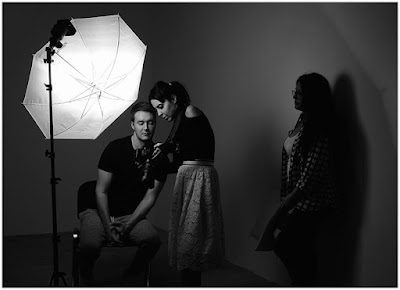Check out these visual art images:
Washington DC: National Gallery of Art – Pei’s Tetrahedron skylights

Image by wallyg
The National Gallery of Art, administered by the Smithsonian Institute, was established on the National in 1938 by the United States Congress with funds for construction and a substantial art collection donated by Andrew W. Mellon, major art works donated by Lessing J. Rosenwald, Italian art contributions from Samuel Henry Kress, and more than 2,000 sculptures, paintings, pieces of decorative art, and porcelains from Joseph E. Widener.
The museum comprises two building, the West Building, and the East Building, which are linked by a spacious underground concourse resting beneath a series of terahedron "crystal" skylights. The West Building, composed of pink Tennessee marble, was designed in 1937 by architect John Russell Pope. Pope’s neoclassical style features a central pavilion with a gigantic columned portico and a massive dome, flanked by large, symmetrical east and west wings. In contrast, East Building, which was designed in 1978 by I.M. Pei, is sharply geometrical and fragmented. The H-shaped façade is similarly faced in pink marble from the same quarry. To emphasize the sharp angles, though, lighter stone was used for the vertical corners. The sharp fin of the west corner cleaves the air at an angle of 19.5 degrees and rises 107 feet above ground.
The West Building has an extensive collection of paintings and sculptures by European masters from the medieval period through the late 19th century, as well as pre-20th century works by American artists. The East Building focuses on modern and contemporary art. The East Building also contains the main offices of the NGA and a large research facility, Center for the Advanced Study in the Visual Arts (CASVA). To the west of the West Building, across Seventh Street, is the 6.1 acres Sculpture Garden, centered on a large circular fountain (an ice rink in the winter) surrounded by stone seating.
The Smithsonian Institution, an educational and research institute and associated museum complex, administered and funded by the government of the United States and by funds from its endowment, contributions, and profits from its shops and its magazines, was established in 1846. Although concentrated in Washington DC, its collection of over 136 million items is spread through 19 museums, a zoo, and nine research centers from New York to Panama.
Washington DC: National Gallery of Art – Pei’s Tetrahedron skylights

Image by wallyg
The National Gallery of Art, administered by the Smithsonian Institute, was established on the National in 1938 by the United States Congress with funds for construction and a substantial art collection donated by Andrew W. Mellon, major art works donated by Lessing J. Rosenwald, Italian art contributions from Samuel Henry Kress, and more than 2,000 sculptures, paintings, pieces of decorative art, and porcelains from Joseph E. Widener.
The museum comprises two building, the West Building, and the East Building, which are linked by a spacious underground concourse resting beneath a series of terahedron "crystal" skylights. The West Building, composed of pink Tennessee marble, was designed in 1937 by architect John Russell Pope. Pope’s neoclassical style features a central pavilion with a gigantic columned portico and a massive dome, flanked by large, symmetrical east and west wings. In contrast, East Building, which was designed in 1978 by I.M. Pei, is sharply geometrical and fragmented. The H-shaped façade is similarly faced in pink marble from the same quarry. To emphasize the sharp angles, though, lighter stone was used for the vertical corners. The sharp fin of the west corner cleaves the air at an angle of 19.5 degrees and rises 107 feet above ground.
The West Building has an extensive collection of paintings and sculptures by European masters from the medieval period through the late 19th century, as well as pre-20th century works by American artists. The East Building focuses on modern and contemporary art. The East Building also contains the main offices of the NGA and a large research facility, Center for the Advanced Study in the Visual Arts (CASVA). To the west of the West Building, across Seventh Street, is the 6.1 acres Sculpture Garden, centered on a large circular fountain (an ice rink in the winter) surrounded by stone seating.
The Smithsonian Institution, an educational and research institute and associated museum complex, administered and funded by the government of the United States and by funds from its endowment, contributions, and profits from its shops and its magazines, was established in 1846. Although concentrated in Washington DC, its collection of over 136 million items is spread through 19 museums, a zoo, and nine research centers from New York to Panama.




